Cleaning Your PC for Enhanced Performance
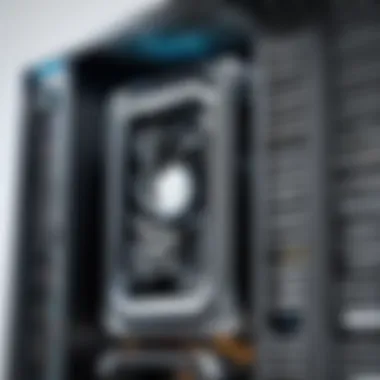
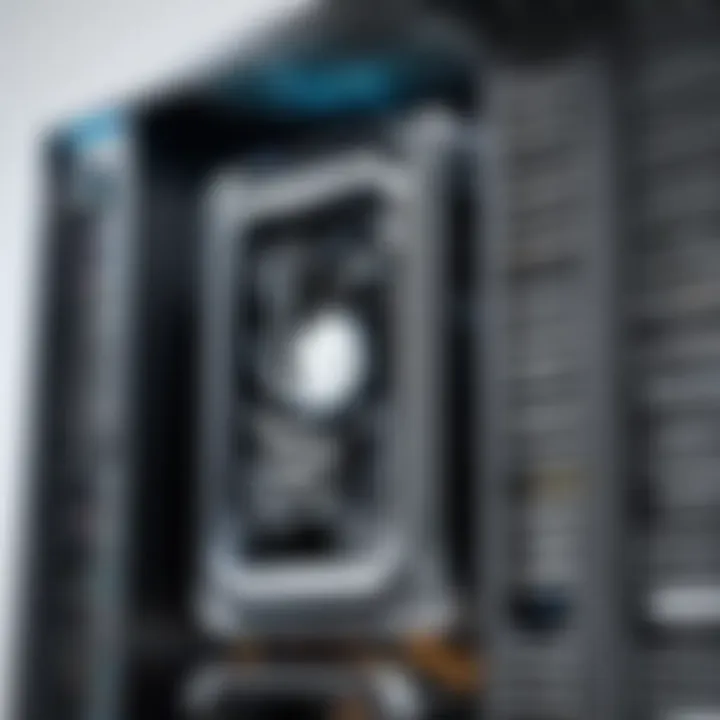
Intro
In a world where personal computers have become a vital part of our daily lives, the significance of keeping those machines in tip-top shape cannot be overstated. Much like a well-tuned engine in a car, a clean and organized PC contributes not just to performance but also to longevity. A regular cleanup can yield a surprising impact on speed and efficiency, which in turn, enhances the user experience for both casual users and IT professionals.
This guide aims to shed light on various cleaning practices—both the physical aspects like dust removal and the digital components such as clearing out unnecessary files. Understanding how these factors relate to overall performance is crucial. By taking systematic steps toward cleaning your PC, you’ll be primed to enjoy smoother operation and possibly even a quicker response time.
Performance Metrics
Benchmarking Results
When assessing the enhancements in performance through cleaning, benchmarking serves as a reliable tool. This metric allows users to measure their PC's capabilities before and after a thorough cleaning regimen. While many prefer popular benchmarking software like UserBenchmark or 3DMark, the results typically illustrate a notable uplift in performance metrics. For instance, a study conducted among various machines documented delayed boot times improving by as much as 20% after a clean-up.
Notably, hardware health checks can reveal deteriorating components like HDDs or heat-induced throttling in CPUs. By keeping these benchmarks in check, IT folk can determine if physical cleanup contributes to a better-performing system.
Speed and Responsiveness
The relationship between cleanliness and speed often reveals itself in surprising ways. A machine burdened by dust or digital clutter shows signs of sluggishness; boot-up times stretch, applications take ages to launch, and gaming performance dips. Cleaning the internals—removing dust from fans and heatsinks—can significantly reduce temperatures and improve airflow. This helps in maintaining ideal operating levels, thereby boosting responsiveness. Likewise, managing digital clutter through effective file organization can accelerate loading times.
To effectively track improvements, it's advisable to regularly measure performance metrics such as:
- Boot time
- Application load time
- Game frame rates
- Disk read/write speeds
Keeping a consistent record allows you to see patterns and correlations between cleaning activities and performance upgrades. As they say, knowledge is power. So, arm yourself with the right tools before you commence any cleanup effort.
Usability and User Experience
Ease of Installation and Setup
The paradox often arises: cleaning may sound daunting, but with proper preparations, the process can be straightforward and user-friendly. For instance, using compressed air to blow out dust is as uncomplicated as it gets. There are also countless guides available—sometimes just a quick search on Reddit or Facebook groups can reveal gems of wisdom that can simplify the whole process.
Interface Design and Navigation
When cleaning digitally, user experience matters just as much. Deleting redundant applications and clearing browser caches can do wonders for system efficiency, but those options should be intuitive. Tools like CCleaner provide a neat interface that streamlines the cleaning process, making it accessible even for less tech-savvy individuals. The better these tools are designed, the smoother the entire experience will be, allowing users to focus more on enhancements than technicalities.
"Cleaning a PC is not just about aesthetics; it’s a vital aspect that supports system health and overall performance."
This narrative underscores how cleanliness—both tangible and digital—plays a crucial role in optimization, allowing for a well-rounded approach to PC maintenance. Through diligent application of these techniques, users can not only increase their machine's capacity but also enhance their interaction with technology, ultimately leading to a smoother, more efficient computing experience.
Prologue to PC Cleaning
In today’s fast-paced world, where technology takes centre stage, keeping your PC in tip-top shape is crucial. The performance of your personal computing device can have a significant impact on your productivity, efficiency, and overall experience. Ignoring the need for regular cleaning—both physically and digitally—may lead to sluggish performance and even frequent crashes, which can be quite frustrating.
Defining PC Cleaning
PC cleaning involves two main dimensions: physical and digital. Physically cleaning your computer includes removing dust and debris from hardware components such as the case, fans, and power supply. Dust bunnies can build up over time, acting like a blanket that traps heat, which might lead to overheating and potential damage to vital components. On the digital side, cleaning focuses on optimizing the software environment by managing files, uninstalling unnecessary programs, and running maintenance tools that can free up space and improve responsiveness.
Both aspects of PC cleaning are interlinked and contribute to enhancing overall performance. Without proper care in either arena, your computer might just decide to hit pause when you need it most.
Importance of Maintenance
The significance of maintenance cannot be overstated. Regular cleaning contributes directly to the longevity of your PC. Here are some key considerations:
- Prevention of Overheating: Dust accumulation can block airflow, leading to higher internal temperatures and, in severe cases, hardware failure. Keeping components clean promotes better cooling and prevents overheating.
- Enhanced Response Times: Digital clutter—bloated files, unnecessary applications—can slow down system operations significantly. By regularly cleaning up your software environment, you can ensure faster boot times and improved application responses.
- Increased Lifespan: An effective maintenance routine can prolong the lifespan of your PC. Just as you wouldn’t neglect your car’s oil changes and tire rotations, your computer deserves the same level of care.
- Optimized Performance: When everything runs smoothly—both hardware and software—your computer can perform at its best, keeping you productive and stress-free.
"Regular maintenance is like giving your computer a check-up. Ignoring it is like skipping doctor visits; you may not see the problems until they become serious."
Physical Cleaning of Your PC
Physical cleaning of your PC is crucial in ensuring that both performance and longevity are maximized. Over time, dust and debris can accumulate inside a computer case, leading to overheating and inefficiencies. This accumulation contributes to the overall health of the components. Regularly cleaning the insides, like the CPU and GPU, helps to maintain optimal operation and prevent wear and tear. The physical aspects of cleaning are just as important as digital maintenance, as they directly contribute to the system's capability to run smoothly.
Dust Accumulation
Dust accumulation is perhaps the most common issue faced by PC users. It doesn’t just hide your beautiful hardware; it can wreak havoc on performance. When dust layers build up, they block vents, which leads to a rise in temperature. A hotter machine can slow down processes and even, in some cases, lead to component failure. It’s not just an aesthetic concern—keeping dust at bay is vital for your hardware’s health.
Cleaning Techniques
Cleaning your PC effectively requires something more than just a damp cloth, and understanding these techniques can save your system.
Using Compressed Air
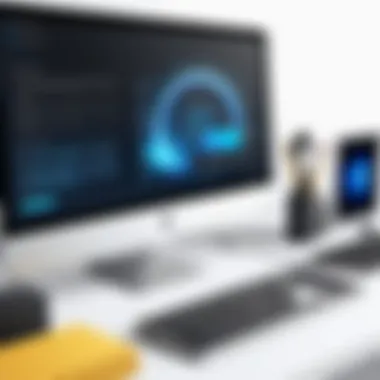
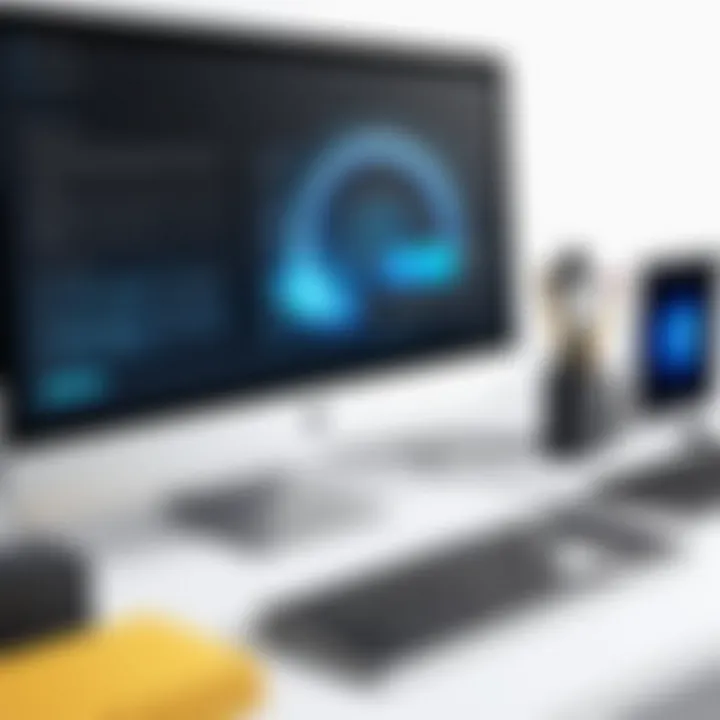
Using compressed air is a popular method to clean electronics because it effectively blasts away dust without leaving residue. It reaches into those hard-to-get-to spots where your fingers can’t reach or where standard cleaning tools might not fit. A key characteristic of compressed air is its ability to quickly and thoroughly remove particulate matter without having to disassemble a system entirely. However, it’s essential to hold the can upright to avoid liquid propellant from escaping, which could cause damage. As a beneficial option for ensuring that keyboards, fans, and heatsinks are dust-free, compressed air can sometimes create a lot of noise, leading to an uneasy cleaning experience.
Microfiber Cloth Technique
The microfiber cloth technique is another effective method for keeping surfaces clean. Microfiber cloths are super absorbent and trap dust and fingerprints without scratching delicate surfaces. This technique is really about wiping down surfaces—like the outside of the case or the screens—that often get neglected. Microfiber is popular because it doesn't require harsh cleaners; in fact, just a dry cloth usually does the trick. However, the unique feature here is that it doesn’t always address the inner workings of your PC, where deeper cleaning might be necessary. This makes it best used in tandem with other methods.
Keeping Components Dry
Keeping components dry throughout cleaning can be paramount to preventing circuit damage. Moisture and electronics don’t usually mix well, a lesson many have learned the hard way. When cleaning, it is critical to ensure that no liquid gets inside, especially if you are using any solutions. A significant advantage of this approach is that it reduces the risk of short-circuits. Always ensure that components are completely dry before you power back up. In some cases, like with compressed air, if not used properly, there remains a risk of moisture if the canister is inverted.
Impact on Hardware Performance
The impact of physical cleaning on hardware performance is undeniable. When you eliminate dust and particles that block airflow, your hardware operates within a safer temperature range. Cooler components can lead to better speed and efficiency. If a machine runs hotter, it may throttle performance to protect itself, which can be a frustrating experience during critical tasks.
"An ounce of prevention is worth a pound of cure." This saying rings true in the world of PC maintenance.
In summary, the physical cleaning of your PC is the foundation of maintaining its performance. Using methods like compressed air, microfiber cloths, and keeping components dry can lead to richer performance, fewer hardware issues, and an overall more pleasant computing experience.
Digital Cleaning of Your PC
Digital cleaning is crucial in retaining a smoothly operating personal computing environment. Unlike physical cleaning, which deals with dust and debris, digital cleaning tackles the clutter that builds up in software, causing a major slow down in performance. Over time, files, applications, and temporary data can bog down a system, making even the fastest hardware feel sluggish. By focusing on digital cleaning, users can ensure their systems run efficiently, accelerating key processes and boosting productivity.
Understanding Software Clutter
Software clutter refers to the accumulation of unused files, unnecessary programs, and outdated data that fill up your hard drive or SSD and consume system resources. It’s akin to having too much junk in your attic—eventually, it becomes challenging to find what you really need. This clutter can significantly affect your computer’s operational speed. Common sources of software clutter include:
- Temporary Files: These are leftover files from installations or updates.
- Old Downloads: Files you downloaded ages ago, still sitting there, taking up space.
- System Restore Points: These can stack up over time without proper management.
By routinely checking for these hidden culprits, users can often free up numerous gigabytes and make their systems feel more responsive.
Uninstalling Unused Applications
Ever installed a program with high hopes, only to let it gather dust? Uninstalling applications you no longer need can significantly improve performance. This isn’t just about freeing up disk space; it’s also about boosting system performance. Each app may run background processes that strain resources.
Some considerations when uninstalling:
- Evaluate what you use regularly. If it hasn’t been touched in months, it might be time to let go.
- Check for pre-installed programs that came with your PC. These often serve little purpose but consume resources.
- Consider third-party applications—replacements might be available that perform better.
Disk Cleanup Tools
Using disk cleanup tools can be one of the simplest ways to address digital clutter. While Windows comes with its built-in Disk Cleanup utility, many third-party options exist that offer advanced functions. These tools are designed to identify and remove unnecessary files, temporary files, and system caches, restoring both space and speed to your machine.
Some popular tools include:
- CCleaner: A widely used tool that safely cleans junk files.
- BleachBit: Open-source software that can clean a variety of system files.
- Windows Disk Cleanup: Found within Windows, it’s often left unutilized.
Installing and using these tools regularly not only cleans up storage but can also improve system stability by removing outdated or corrupted files.
Managing Startup Programs
Startup programs can play a major role in how fast your machine boots and how it performs after booting. Every time the system starts up, it might run through a series of apps that you didn’t even remember installing. This can slow your boot time and put a burden on system resources.
To manage these effectively:
- Access the Task Manager: Right-click on the taskbar and select Task Manager. Navigate to the Startup tab.
- Disable Unnecessary Items: Look through the list and disable items that don’t need to run at startup.
- Assess Impact: Some programs will display their impact on startup speed, which can guide your decisions.
"A clean startup leads to a clean slate for your tasks. Kick out programs that don’t need to be there."
Keeping a lean startup list not only speeds up boot times but also allows the system to allocate resources more effectively once you log on.
Implementing these digital cleaning methods can enhance your computer's performance significantly. By keeping software clutter in check, uninstalling unused programs, employing disk cleanup tools, and managing startup programs, you can create a more efficient computing experience.
For further details and guides, you may visit Wikipedia, Britannica, or explore community discussions on Reddit.
By regularly maintaining the digital side of your PC, you tackle potential bottlenecks before they become significant issues.
Registry Maintenance
Keeping your PC in tip-top shape requires more than just cleaning the surface and removing dust bunnies. One often overlooked area is the Windows Registry, a database that houses not only your system's settings but also the configuration data for installed applications. In simple terms, the Registry is like a map; it guides your operating system in finding the right paths to files and settings.
Role of the Registry


The Registry plays a vital role in the overall performance of your computer. It stores critical information about your system’s hardware and software. Being such an integral part of the architecture, any errant entries can lead to sluggish performance or even system crashes. Think of it as the nervous system of your computer. Just like a signal misfiring in the body can cause confusion, a corrupted registry entry can create chaos for your PC. Remember, though, it doesn’t just affect software; it can impact hardware functions as well. Regularly maintaining this aspect ensures smooth communication between the various components of your system.
Cleaning the Registry Safely
When it comes to cleaning the Registry, treading carefully is key. Unlike physical components, a wrong move with the Registry can land you in hot water. Removing a wrong entry might make your system less stable or, in some cases, unusable. Thus, employing specialized software tools that handle registry cleaning is often a wise choice. Here’s a brief list of best practices for safe registry cleaning:
- Always research the tool you are about to use; community reviews on forums like reddit.com can provide quality insights.
- Avoid manually deleting entries unless you are absolutely sure of what they do.
- Query for backup options; most reputable tools will have this integrated.
Backup Procedures
Before you dive into any registry cleaning, a backup is not just a recommendation—it’s essential. Think of this backup as your safety net; it allows you to roll back any changes that could lead to issues later on. To backup your Registry:
- Open the Registry Editor by typing in the Windows search box.
- Navigate to your menu and select .
- Choose an appropriate name and save it to a location you can easily find later, like your Documents folder.
In case something goes awry after cleaning the Registry, you can simply double-click the exported file to restore it. Keeping your registry clean promotes efficiency, but always remember that a little precaution goes a long way in preventing complications.
Defragmentation and its Effects
Defragmentation is often brushed aside in conversations about optimizing PC performance. However, neglecting this crucial step can mean sacrificing much-needed speed and efficiency. At its core, defragmentation focuses on rearranging fragmented data on your hard drive into contiguous blocks. It not only helps declutter your disk but also enhances the overall performance of your machine. When files are spread across different sectors, accessing them takes longer—the system has to jump around to read the data. Defragmenting your drive puts everything in order, allowing for quicker read and write times.
What is Defragmentation?
Defragmentation, or "defragging" as it’s commonly referred, is the process of reorganizing the data on your hard drive. Over time, as you add, delete, and move files, the data can become scattered. Think of it like an untidy closet where it’s challenging to find your favorite shirt hidden under a pile of clutter. Defragging tidies things up. During this process, your PC consolidates files, bringing related data closer together. The result? Faster load times and smoother performance in applications. It’s important to mention, though, that some modern solid-state drives (SSDs) operate differently and might not require traditional defragmentation.
When to Defragment Your Hard Drive?
Determining the right time to defrag is essential. A general guideline is to check for fragmentation levels about once a month. Microsoft Windows has a built-in tool to analyze your drive’s status. If you find that over 10% of your files are fragmented, it’s time to take action. Also, keep an eye on the performance of your PC. If you notice sluggishness in file access or application loading times, that’s a telltale sign that defragmentation might be in order.
In some scenarios, such as after significant changes in your file sizes or a massive influx of new data, you may want to defrag sooner. But if you are using an SSD, you’d want to hold off on traditional defragmentation, as it can wear down the drive rather than improve performance. Instead, these drives often have built-in mechanisms to handle data efficiently themselves.
Tools for Defragmentation
When it comes to defragmenting, there’s no shortage of tools available. Here’s a quick rundown of popular options:
- Windows Disk Defragmenter: A built-in utility in Windows that’s entirely user-friendly. You can schedule regular defrags to maintain optimal performance without lifting a finger.
- Defraggler: Created by Piriform, this tool offers more granular controls, allowing you to defrag specific files or folders instead of the entire drive. This could be beneficial if you are concerned about time or wish to target specific areas.
- Smart Defrag: A free tool from IObit, offering scheduling and auto-defragmentation features, making it easy for users to set it and forget it.
In summary, understand that defragmentation plays a vital role in maintaining your PC's efficiency. Regularly assessing your system and knowing when to address fragmentation can lead to significant performance gains and prolong the life of your hardware. Remember, a well-ordered hard drive can be the difference between a sluggish PC and a well-oiled machine.
Software Updates and System Performance
Keeping your computer in top shape isn't just about dusting off the hardware. One crucial aspect that often slides under the radar is the importance of software updates. Regularly updating software can directly impact your system’s performance, security, and overall reliability. Without these updates, you could be leaving your PC vulnerable to bugs and slowdowns, detracting from the very efficiency that cleaning seeks to enhance.
Importance of Updates
When it comes to software updates, thinking of them as routine check-ups for your PC is a good way to see their relevance. These updates provide enhancements that refine performance, improve compatibility with new programs, and patch security vulnerabilities. By ignoring updates, you might experience crashes or glitches, kind of like driving a car with low oil; it's only a matter of time before something goes wrong. Regular updates also mean that you benefit from the latest features and improvements in speed that can elevate your user experience to a whole new level.
"An updated system is a safe and efficient system."
This principle really highlights how crucial it is to stay on top of software updates. They optimize your setup, ensuring everything runs as seamlessly as a well-oiled machine.
Updating Drivers
Drivers act as the bridge between your operating system and the hardware components. Keeping them up to date is essential because outdated drivers can lead to hardware conflicts or degraded performance, similar to trying to run a sprint with flat tennis shoes. Each hardware component, whether GPU, CPU, or peripherals, has its specific set of drivers that need refreshing every so often.
- Evaluate Needed Updates: Use device manager tools or software from the hardware manufacturer to identify which drivers require updates.
- Roll Back if Necessary: Occasionally, an update might introduce instability. Don’t hesitate to roll back to an earlier version if required.
Operating System Updates
The operating system forms the backbone of your PC's functionality. When updates for your OS are available, they're akin to receiving crucial patches that fix bugs and enhance your system’s security. Enhanced security features, better user interfaces, and updated core functions are just the tip of the iceberg when it comes to what OS updates can offer.
- Schedule Regular Updates: Set your operating system to update automatically if it's feasible. This minimizes the chances of forgotten updates and associated issues.
- Monitor Major Versions: Sometimes, a major update will include a significant overhaul. Mark your calendar for these updates, as they can drastically improve not just performance but also user experience.
- Read Release Notes: Understanding what’s included in an update can prepare you for changes that may affect your workflow.
In summary, software updates—be they for applications or the operating system—are paramount for enhancing your PC's performance. Being diligent about updates can help catch issues before they snowball and ensures that your PC remains a reliable tool for your needs. In essence, keeping software updated is just another layer in your comprehensive cleaning routine, striving to maintain your system’s efficiency and longevity.
Understanding Hardware Limitations
When discussing the performance of a personal computer, it's vital to acknowledge hardware limitations. These constraints can dictate how much cleaning and optimization you might achieve. Recognizing these limits helps in setting realistic expectations regarding your system's capabilities. This section will unpack the significance of understanding hardware limitations, shedding light on specific components, benefits, and considerations.
Evaluating Your Components
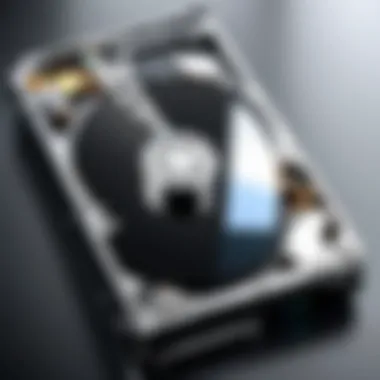
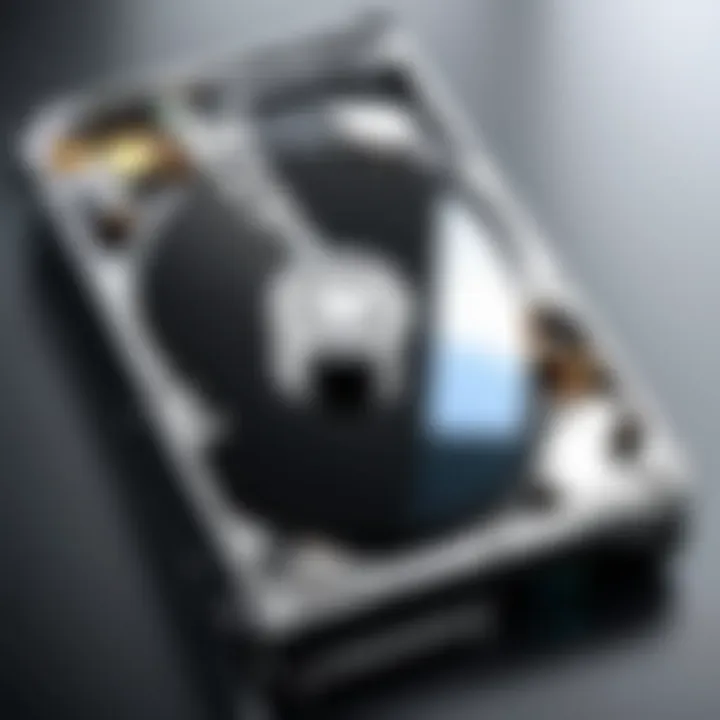
To truly grasp the extent of your hardware capabilities, you need to begin with evaluating your components. CPUs, RAM, graphics cards, and storage devices each play a pivotal role in overall performance. This consideration includes not only their specifications but also their age and condition. Here’s a brief rundown on what to focus on during this evaluation:
- CPU Speed and Core Count: A faster processor with more cores can handle multiple tasks efficiently. If your CPU is older, it might lag behind newer models.
- RAM Size and Type: More RAM generally means better multitasking capabilities. If you’re frequently running out of memory, it might be time for an upgrade.
- GPU Performance: For gaming or graphic design, a strong GPU is crucial. Low-end graphics cards will struggle with high-resolution tasks.
- Storage Type: Solid-state drives (SSDs) are faster compared to traditional hard drives (HDDs). Upgrading from HDD to SSD can significantly enhance speed.
In summary, determining the suitability of your components against current market standards fosters an understanding of what’s achievable during the cleaning and optimization process.
When Cleaning is Not Enough
Cleaning can work wonders for your PC's performance. However, there comes a point when cleaning is not enough. Sometimes, despite thorough cleaning, your system may not perform to its full potential.
- Obsolete Components: If your hardware is outdated, even the best cleaning methods won't help. Performance bottlenecks arise from hardware that can't meet the demands of modern applications.
- Physical Damage: Scrapes, dents, or burned out circuitry from overheating affect functionality. No amount of cleaning can fix damaged components.
- Compatibility Issues: Sometimes, newer software demands more than older hardware can handle. If your operating system or applications are constantly requiring more than your hardware can give, upgrades may be the only solution.
"Some battles aren’t meant to be fought with a broom and dustpan, but rather with an upgrade card in hand."
Realizing when cleaning falls short allows you to pivot towards diagnosing potential upgrades or replacements. After all, it’s about achieving optimal performance—and knowing the point at which cleaning won't cut it is crucial for tech enthusiasts and IT professionals alike.
Benchmarking After Cleaning
After all the dust has settled—literally and figuratively—it's time to delve into the critical aspect of measuring improvements in your PC's performance. The benchmarking process following a cleaning session serves as a guiding light, illuminating the path toward enhanced speed and efficiency. While cleaning can be somewhat of a chore, the results can be tremendously satisfying, especially when you can quantitatively assess the impact of your efforts.
Assessing Performance Improvements
To kick things off, understanding how your PC performs is central to gauging the effects of cleaning. Analyzing performance before and after your cleaning will allow you to put numerical values to the experience. After cleaning, users often notice a decrease in load times, smoother multitasking, and even improved gaming experiences—if that’s your cup of tea.
When you conduct a benchmarking test post-cleaning, consider the following elements:
- Load Times: Checking how quickly applications fire up can be revealing.
- Frame Rates: For gamers, smoother frame rates can often mean the world.
- Startup Times: A clean PC should boot up a bit quicker.
Using a specific benchmarking software not only ensures that you’re taking accurate measurements but helps in identifying areas that still need tweaking. For instance, if load times improved but startup times didn’t, it might point to some lingering issues that cleaning alone didn’t address.
Tools for Benchmarking
Now that you’re ready to evaluate how well the dirt has been scrubbed away, let’s sift through some useful tools for benchmarking. Investing time in the right software can shed light on performance metrics that matter.
Some notable options are:
- Cinebench: Great for CPU performance testing; it’s simple to use and provides a clear benchmark score.
- 3DMark: Ideal if you’re focused on gaming performance, as it also tests GPU efficiency.
- UserBenchmark: A web-based tool that allows for easy comparison with a broad dataset, making it users' go-to.
- CrystalDiskMark: Perfect for assessing the read and write speeds of your drives. An often-overlooked aspect when it comes to overall system performance.
It’s worth noting that while benchmarking might feel akin to spinning your wheels at times, these tools provide key insights that inform your next steps in optimizing your PC.
"Cleaning and maintaining your PC doesn't just lead to a tidy setup; it's the gateway to peak performance. Each measure taken, from physical to digital, can show up in numbers—making it all the more rewarding."
Preventive Measures for Future Performance
Preventive measures hold great significance when it comes to maintaining your PC's performance over time. Just like a car needs regular servicing to keep running smoothly, your computer requires consistent attention to avoid performance throttling. This section will elaborate on the importance of sustaining a proactive approach to PC care, focusing on aspects such as regular maintenance schedules and best practices that can prolong the life of your system and enhance its functionality.
Regular Maintenance Schedule
Establishing a routine maintenance schedule is crucial whatever level of technical expertise you may possess. A well-planned schedule can save you a world of trouble down the line. Think about it—if you only check the oil in your car after it breaks down, you’ll face much more severe consequences than if you pay attention to the little things regularly.
- Weekly Tasks: Devote some time each week to minor clean-ups. You can delete redundant files, clear out temporary folders, and ensure that your antivirus software is up-to-date. Small actions can build up a solid foundation over time.
- Monthly Tasks: Set aside a bit longer every month to perform more in-depth cleaning. This should include checking for software updates, uninstalling applications that are no longer in use, and performing disk cleanups.
- Quarterly Tasks: Every three months, consider performing a physical cleaning of your computer’s components, including dust removal from fans and heat sinks. This reduces overheating and improves overall performance.
- Annual Review: At least once a year, conduct a comprehensive performance audit of your PC. Take stock of hardware components, evaluate software dependencies, and plan upgrades if necessary. This big-picture perspective can save you trouble before it arises.
Sticking to a routine not only improves your current performance but also acts as a failsafe for potential issues. Much like preventive medicine, the aim here is to catch potential problems before they escalate into something more damaging, which can often render a computer nearly unusable.
Best Practices to Follow
Implementing best practices when it comes to PC maintenance can yield substantial long-term benefits. Below are some suggestions:
- Use Reliable Software: Choose trusted antivirus and cleaning software. Not all solutions are created equal. Stick with the well-reviewed options, and keep them updated as new threats emerge.
- Avoid Overloading Resources: Be aware of the number of programs running in the background. Keeping a lean environment not only reduces lag but also extends hardware lifespan.
- Educate Yourself on New Technologies: Staying updated on advancements and changes to hardware and software can help you make informed decisions about upgrades or replacements.
- Keep Your Data Organized: A well-organized data structure can speed up retrieval times, therefore enhancing performance. Use folders, categorization, and indexing to maintain order.
"An ounce of prevention is worth a pound of cure."
Keeping this old adage in mind will serve you well as the goal here is to enhance the longevity and efficiency of your machine. By employing effective preventive measures, you can ensure that your PC remains responsive and capable, further enabling you to focus on your tasks without the weight of system slowdown weighing you down.
Culmination: The Bottom Line on PC Cleaning
Maintaining a clean PC is not just a matter of aesthetics; it profoundly impacts its performance and longevity. As examined, the cleaning process integrates both physical and digital aspects. If one neglects physical dust build-up, overheating can become the norm, leading to hardware failures or slowdowns. Similarly, a neglected operating system, full of redundant files and unnecessary applications, can sap processing power and slow responsiveness to a crawl.
Given the detailed insights presented in the preceding sections, it’s clear that a systematic approach to PC cleaning can yield significant dividends. Regular dusting and internal cleaning will keep the hardware cool and operational. On the digital front, periodic software maintenance such as uninstalling unused applications and running disk cleanups is equally crucial. Each cleaning step not only restores optimum performance but also extends the useful life of components.
"An ounce of prevention is worth a pound of cure."
This old proverb rings especially true in the realm of computing, where neglect can lead to expensive repairs or replacements down the line. Beyond the immediate benefits of improved performance, the long-term advantages of implementing a dedicated cleaning schedule are unmistakable.
Summary of Key Points
- Physical Cleaning is Vital: Dust is the biggest enemy of computer hardware, leading to overheating and performance issues when components get clogged.
- Digital Cleanup: Organizing files and removing unwanted programs reduces system clutter and enhances speed.
- Regular Maintenance Schedule: Developing a routine for both physical and digital cleaning is essential for ongoing performance.
- Impact of Software Updates: Keeping your operating system and drivers updated helps prevent compatibility issues and security vulnerabilities.
- Understanding Hardware Limits: Recognizing when cleaning isn’t sufficient, and hardware upgrades may be needed helps in maintaining an effective workflow.
Long-term Benefits
- Sustained Performance: Regular cleaning translates to a consistently high-performing system, enabling smoother operation of applications over time.
- Increased Lifespan of Hardware: Keeping components free of debris and running efficiently can considerably prolong their lifespan, saving on costly replacements.
- Enhanced Security: A well-maintained system runs more securely. Outdated software can be vulnerable to attacks, so consistent updates and cleans keep your system fortified.
- Cost Efficiency: While investing time in maintenance might seem tedious, it provides savings in repair costs and potential upgrades in the long run.
- Efficiency in Workflow: A clean system leads to faster boot times and application responsiveness, keeping tech enthusiasts and IT professionals wholly productive.



